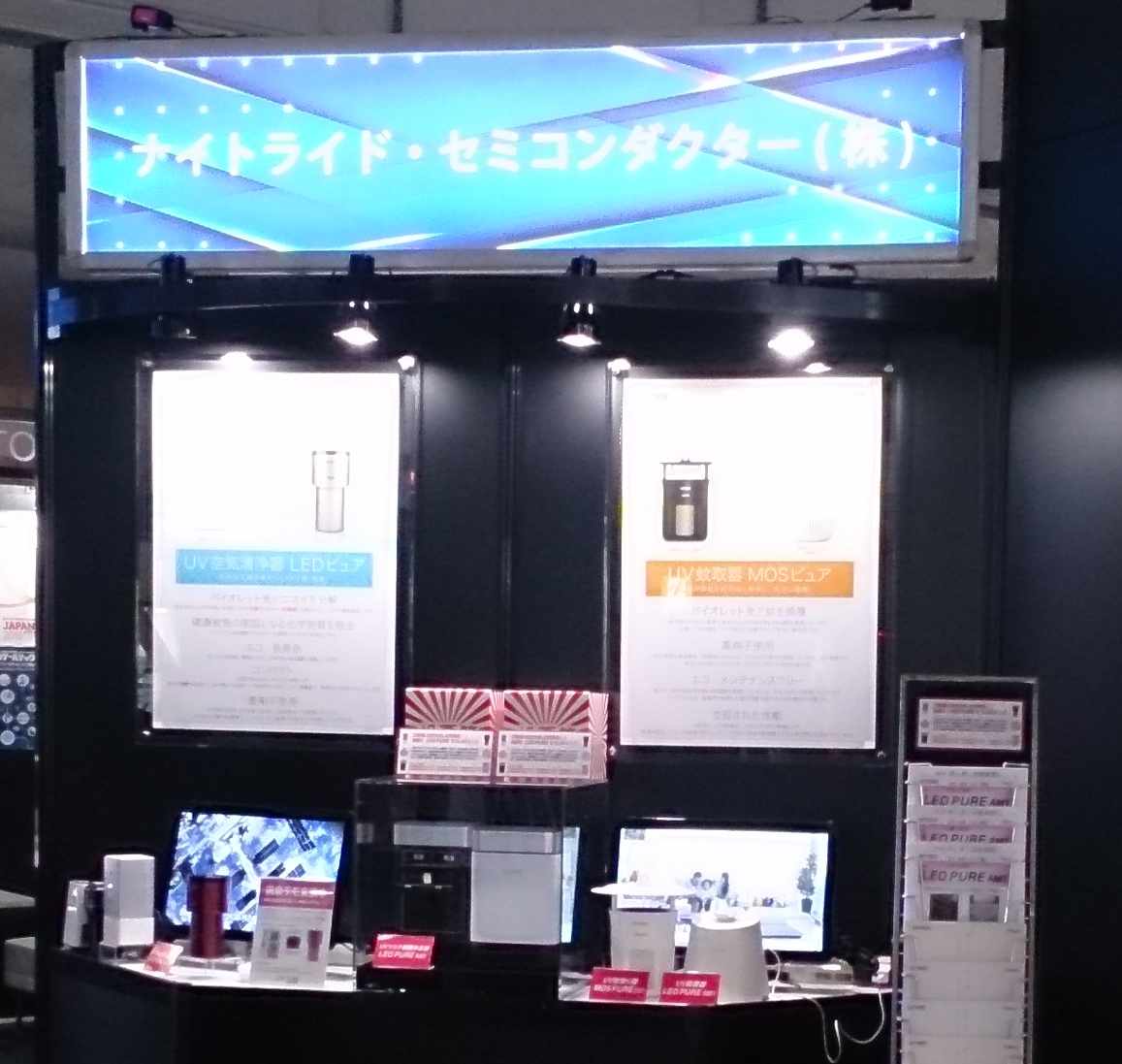NS News & Event
ICWOQ 2025
President and CEO Muramoto gave a keynote speech at the International Conference on Wave Equations, Optics, Engineering and Quantum Mechanics (ICWOQ 2025), which will be held on April 25-26, 2025.
- Date:
- 25 April, 2025 9:30 AM – 10:30 AM(Spain Time) 17:30pm-18:30pm(Japan Time)
- Venue:
- Holiday Inn Barcelona Sant Cugat Carrer del Danubi, 24, 08174 Sant Cugat del Vallès, Barcelona, Spain
- Title :
- Superiority of Photonic Crystal UV Micro LED
MicroLEDs, AR/VR Displays, and Micro-Optics event
President & CEO Yoshihiko Muramoto made a speech at the Virtual Event.
- Date:
- March 6th 2025 11:20am-11:40am(Berlin Time)
19:20pm-19:40pm(Japan Time) - Venue:
- Virtual Event
- Speaker :
- President &CEO Yoshihiko Muramoto
- Title :
- Superiority of ultraviolet micro-LED to visible light micro-LED
Published in "Continuation of the Development of Next-Generation Phosphor Materials" (CMC Publishing) Sep.4th,2024
On this occasion, our CEO, Mr. Muramoto, wrote an article entitled "The Advantages of UV-µLEDs over Red/Green/Blue µLEDs" which was published in "Development of Next-Generation Phosphor Materials (Continued)" (CMC Publishing).
A referral discount (20% off) will be applied to book purchases (20% off = 52,000 yen + tax). If you would like to purchase a book, please contact us using the inquiry form below. *Not available in bookstores. Fill-in form / NITRIDE SEMICONDUCTORS Co.,Ltd.
◇ Background
Micro LED displays are the next generation of displays after LCD and OLED displays, and companies around the world, including Apple Inc., are putting a lot of effort into their development, but the method of applying red, blue, and green micro LED chips that these companies are working on is delayed due to the difficulty of miniaturizing red LED chips to less than 100µm in particular. As a remedy, our group is developing a method of using micro ultraviolet (UV) LEDs to excite red, blue, and green phosphors, and this time we have produced three types of visible light micro LED chips, red, green, and blue, using InGaN-based materials and evaluated their potential as a light source for displays.◇ Experimental content described in this book
We fabricated 4-inch red µLEDs, green µLEDs, blue µLEDs, and UV-µLEDs using InGaN-based materials. In order to ensure that the quality of the four wavelength µLEDs was the same, we used the same chip processing process to fabricate nine types of µLEDs with different sizes and shapes, and measured ① the voltage transition versus input current (I-V characteristics), ② the luminous intensity transition versus input current (I-L characteristics) and EQE, and ③ the luminous spectrum. For the I-L characteristics, we measured the luminous intensity versus current density of the luminous area taking into account the difference in chip size, and verified the differences in characteristics for the nine patterns of n chips on four types of wafers.◇ Results and Significance
We created nine patterns of red, green, and blue µLEDs and UV-µLEDs with different shapes and sizes, and confirmed that the electrical characteristics of UV-µLEDs were the most stable. UV-µLEDs are electrically and optically stable, so when combined with phosphors, they produce stable RGB light with little variation. On the other hand, when adopting a 3-LED display, the issue of improving the variation in characteristics that differ depending on the emitted color, such as I-L characteristics and wavelength shift due to current value, will be an issue that needs to be resolved in the future.◆ photograph
<micro Red LED chip light emission>

<micro green LED chip light emission>

<micro blue LED chip light emission>

<micro UV-LED chip light emission>

WSELOP2024
CEO Muramoto made an invited talk at the World Summit and Expo on Lasers, Optics & Photonics October 17-19, 2024.
- Date:
- October 17st from 12:35PM to 13:00PM(Switzerland time zone)
- Venue:
- Hotel Restaurant Grauholz AG,Autobahn A1,CH-3063 ittigen/Bern,Switzerland
- Speaker :
- CEO Yoshihiko Muramoto
- Title :
- Photonic Crystal UV Micro LED
- Final program:
- WSELOP-2024-tentative-program.pdf (scientificsummits.org)
EGCPA2024
President & CEO Muramoto will give an invited talk from 9:00AM to 9:25AM(Italy time zone) on March 21st at EGCPA2024 Euro Global Congress on Physics and its Applications
- Date:
- March 21st from 9:00AM to 9:25AM (Italy time zone)
- Title :
- Superiority of Photonic Crystal UV Micro LED
- Web site:
- Euro Global Congress on Physics and its Applications 2024
- Final program:
- Scientific Program EGCPA2024
The 70th Annual Meeting of the Japanese Society for Virology
We set up booth at The 70th Annual Meeting of the Japanese Society for Virology.
- Date:
- 26-28 September, 2023 10:00-18:30
- (10:00-14:00 on the last day)
- Venue:
- Sendai International Center, Japan
- Booth Number:
- 11
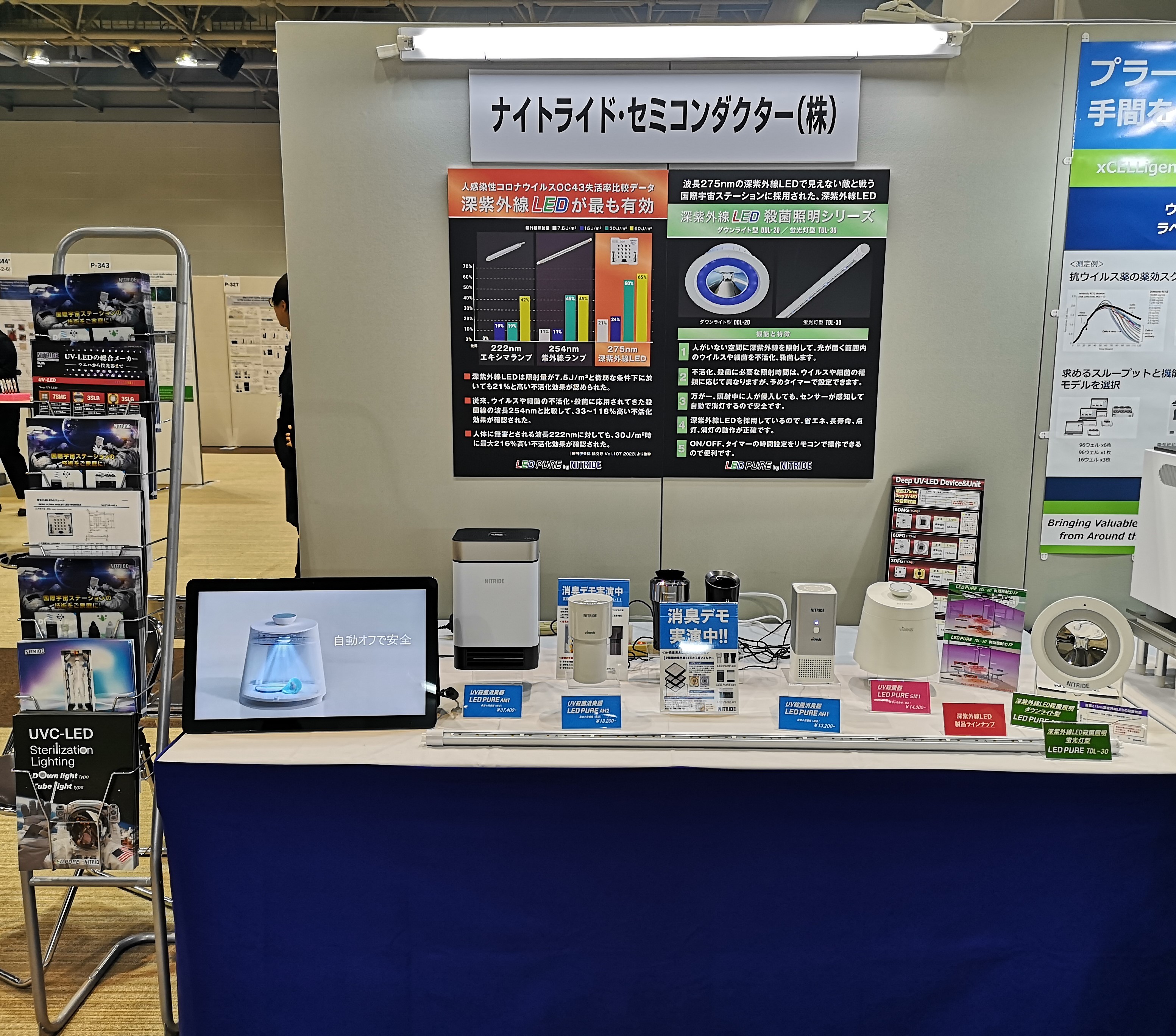
Micro LEDforum 2023
CEO Muramoto made an invited speech at Micro LEDforum 2023.
- Date:
- September 5, 2023 14:00-14:15
- Venue:
- NTUH International Convention Center, Taipei, Taiwan
- Speaker:
- CEO Yoshihiko Muramoto
- Title:
- The progress of UV micro LED display: A Photonic Crystal on UV Micro LEDs
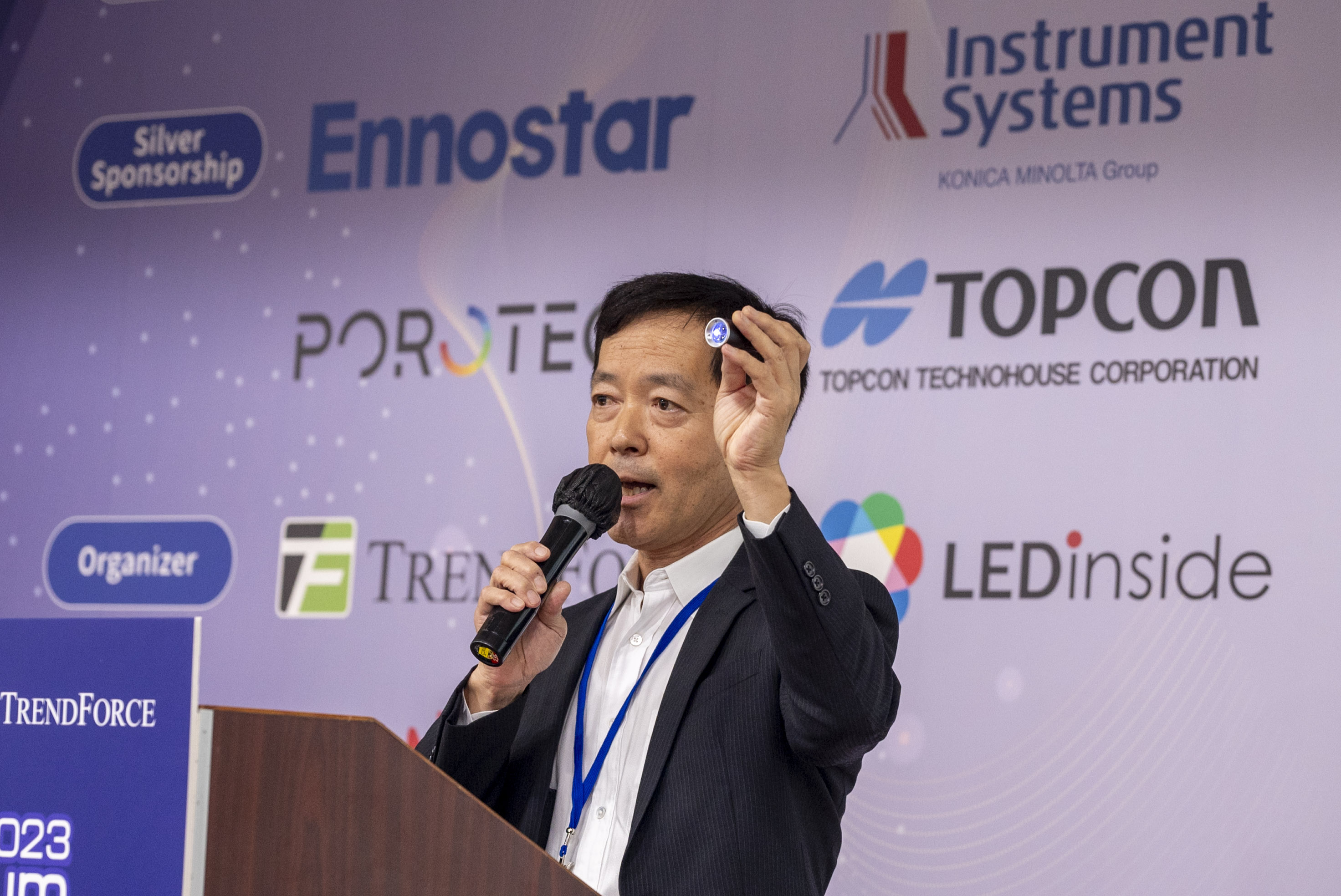
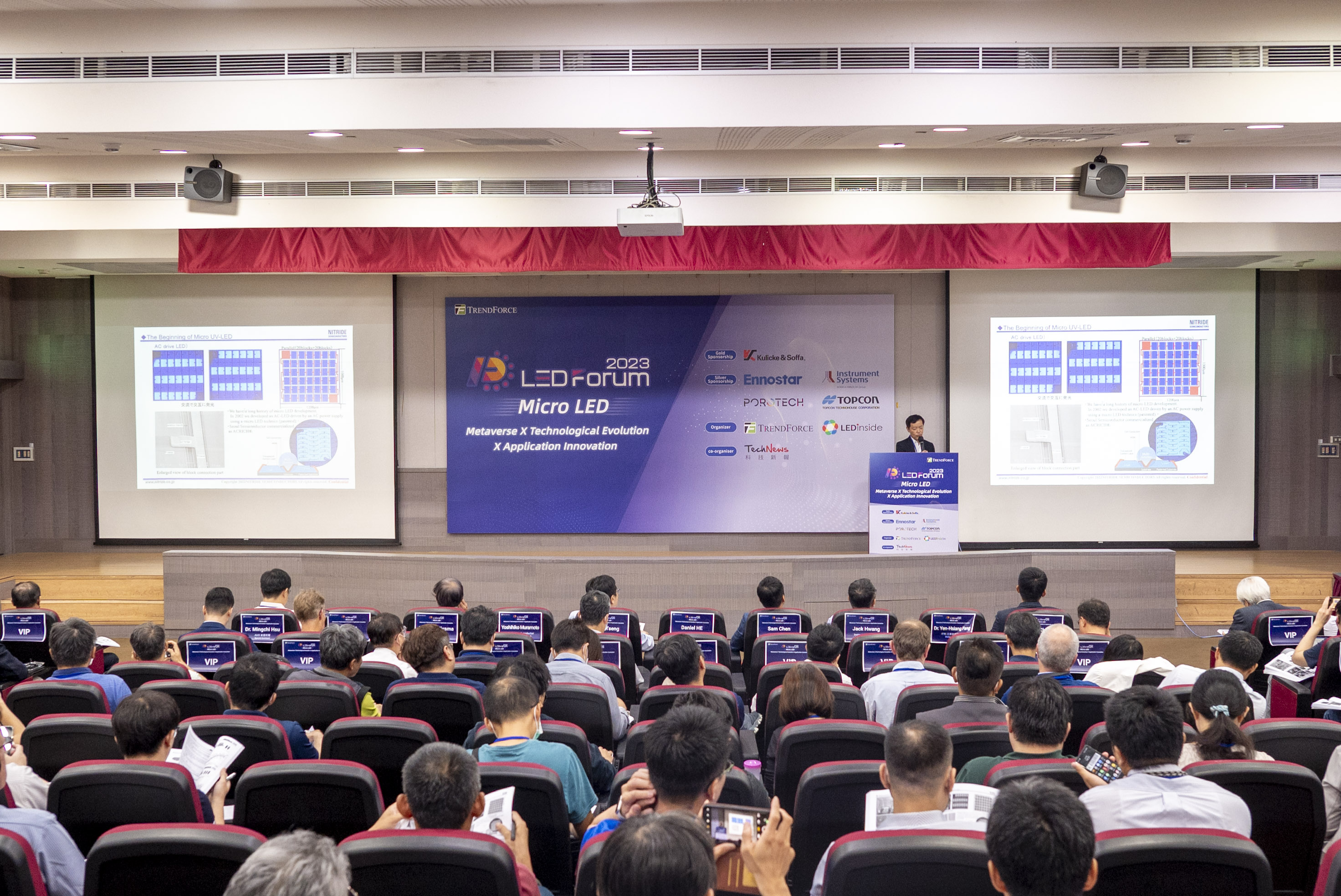
Achieving higher brightness, lower power consumption of UV LEDs by developing PhC
◇ Background
A photonic crystal is a structure in which the refractive index changes periodically, and is used to confine light in a small area and enhance the interaction between light and matter. By artificially creating a periodic structure with a size that matches the wavelength of light, it is possible to realize metamaterials with optical properties that are not possible with ordinary materials. In recent years, due to advances in semiconductor microfabrication technology, basic operation with low power consumption has been confirmed in optical devices such as optical switches, lasers, optical memories, and laser light sources. (Refer to NTT R&D website)◇ Significance
Light from a light-emitting diode (hereinafter referred to as LED) is emitted from the active layer, and the light is emitted 360 degrees in all directions, so the reflector structure inside the chip extracts the light from the front. The LED chip is mounted in a cup-shaped package, and an optical lens narrows the directional angle to control the irradiation range. UV rays are absorbed by resin and glass, so optical lenses with high UV transmittance, such as quartz, are used. Therefore, there is a long-awaited UV-LED that controls the directivity angle without using a lens.◇ Future
UV-LED is expected to replace ultraviolet (mercury) lamps as a clean light source for semiconductor manufacturing that does not contain harmful substances. By applying photonic crystal processing to UV-LEDs, highly efficient, energy-saving, and environmentally friendly UV light sources can be realized. In addition, as a light source for micro-LED displays, which have been actively developed in recent years, the development of full-color displays by combining UV-LEDs and RGB phosphors is progressing. Optical lens control of the light emitted by a micro-sized UV-LED chip not only increases the cost, but also makes it difficult to fabricate a fine lens array. Therefore, by using photonic crystals, light can be controlled efficiently at low cost. In addition to UV-LEDs, by applying photonic crystal processing to blue LEDs that are applied to LED lighting, it is possible to realize lighting with higher brightness and lower power consumption than current LED lighting at a low cost.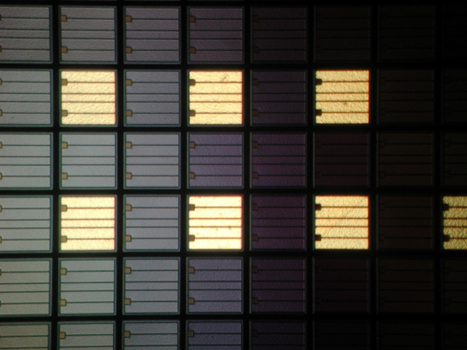
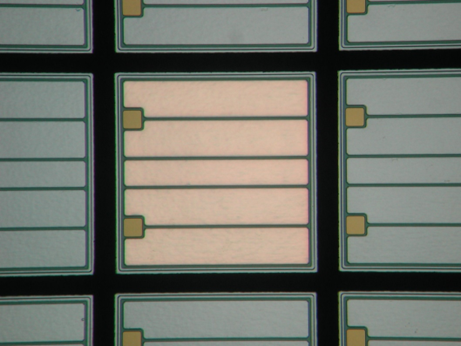
On the 385nm UV-LED chip, PhC emits light by confining white light (when power is off)
WCLOP 2023
CEO Muramoto made an invited speech at WCLOP 2023.
- Date:
- June 22, 2023 15:05-15:25
- Venue:
- Hotel NH Valencia Center Ricardo Mico 1, 46009 Valencia
- Speaker:
- CEO Yoshihiko Muramoto
- Title:
- UVMicroLED Chip Performance, Superiority, and the Future
Micro RGB + UV LED chips trial kit now available for developers Oct. 27th, 2022
◇ Background
In the future, it is expected that the use of the Metaverse (virtual space) will spread not only in business but also in the home. The development of VR (virtual reality) glasses or AR (augmented reality) glasses is becoming active in various countries, such as the release of VR glasses by Google. In the future, there will be a demand for displays capable of displaying high-definition images that are smaller, lighter, and more energy efficient. Companies around the world, including Apple Inc., are competing to develop micro LED displays as the next generation of liquid crystal (LCD) and organic EL displays, but the cost and stable supply of micro LED chips have become issues. In particular, red LEDs are difficult to microchip because gallium arsenide (GaAs) and gallium phosphide (GaP) are fragile and have low light extraction efficiency due to their high refractive index. There are also challenges in achieving high efficiency. We are developing displays by exciting three types of red, blue, and green phosphors with micro UV-LEDs. Furthermore, we have succeeded in developing mass production technology for red, green, blue microchips. Therefore, users can achieve mass production of micro LED displays by mounting three types of micro LED chips of red, blue and green, which is the conventional method.◇ Micro RGB + UV LED chips trial kit
InGaN-based LED wavelength 620nm red LED, wavelength 510nm green LED, wavelength 450nm blue LED grown on a sapphire substrate by MOCVD and 1 block of UV-LED 385nm, 4 in total is 1 set. The size of one block is 17 mm x 13 mm, and nine different sizes of microchips ranging from 12 µm x 24 µm to a maximum of 288 µm x 288 µm are placed on the sapphire substrate. (However, the minimum chip size that emits light in red is 24 µm x 48 µm or more, and the size smaller than that does not emit light.) We sell this kit so that developers of Micro LED displays can try chips with various wavelengths and sizes and select the optimum chip for mass production of Micro LED displays. For mass production, one type of chip with the optimum wavelength and size is grown on 4-inch or 6-inch sapphire substrate according to the customer's request, and then microchip processing is performed.◇ Price
1 block of red, blue, green, UV, total 4 blocks 1 set:USD 7000.00 or JPY 1 million
For further information, please contact us.
◇ Data
Block size : 17mm x 13mm
Chip structure : flip chip Chip size : 12µm×24µm 12µm×48µm 24µm×24µm 24µm×48µm 24µm×72µm 48µm×48µm 72µm×72µm 144µm×144µm 288µm×288µm Total 9 sizes<micro Red/Green/Blue/UV LED chip emission spectrum _48µm x 48µm chip>
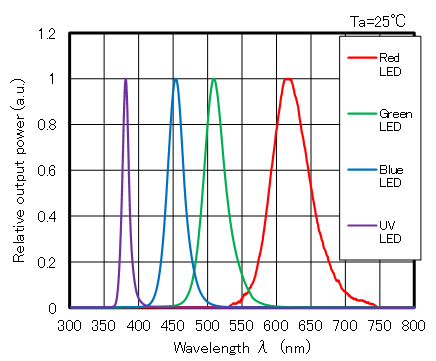
<micro Red/Green/Blue/UV LED chip I-V characteristic _48µm x 48µm chip>
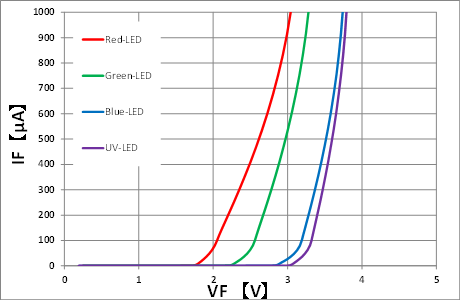
<micro Red LED chip light emission>
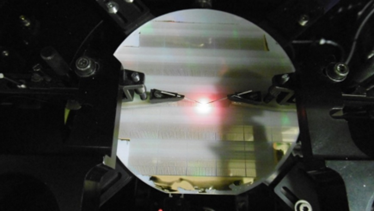
<Appearance of 24µm×48µm micro Red LED chip (electrode side)>
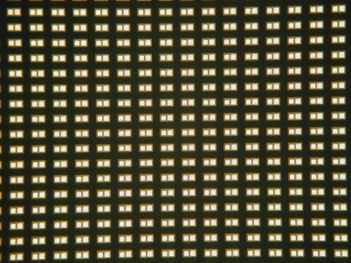
ODF’22 SAPPORO
We attended the Poster Session of ODF’22 SAPPORO.
- Date:
- August 4th, 2022 18:00-20:00
- Venue:
- Sapporo Convention Center, Sapporo, Japan
- Title:
- Power Conversion Efficiency of RGB Phosphor by Excitation of 385nm Ultraviolet LED
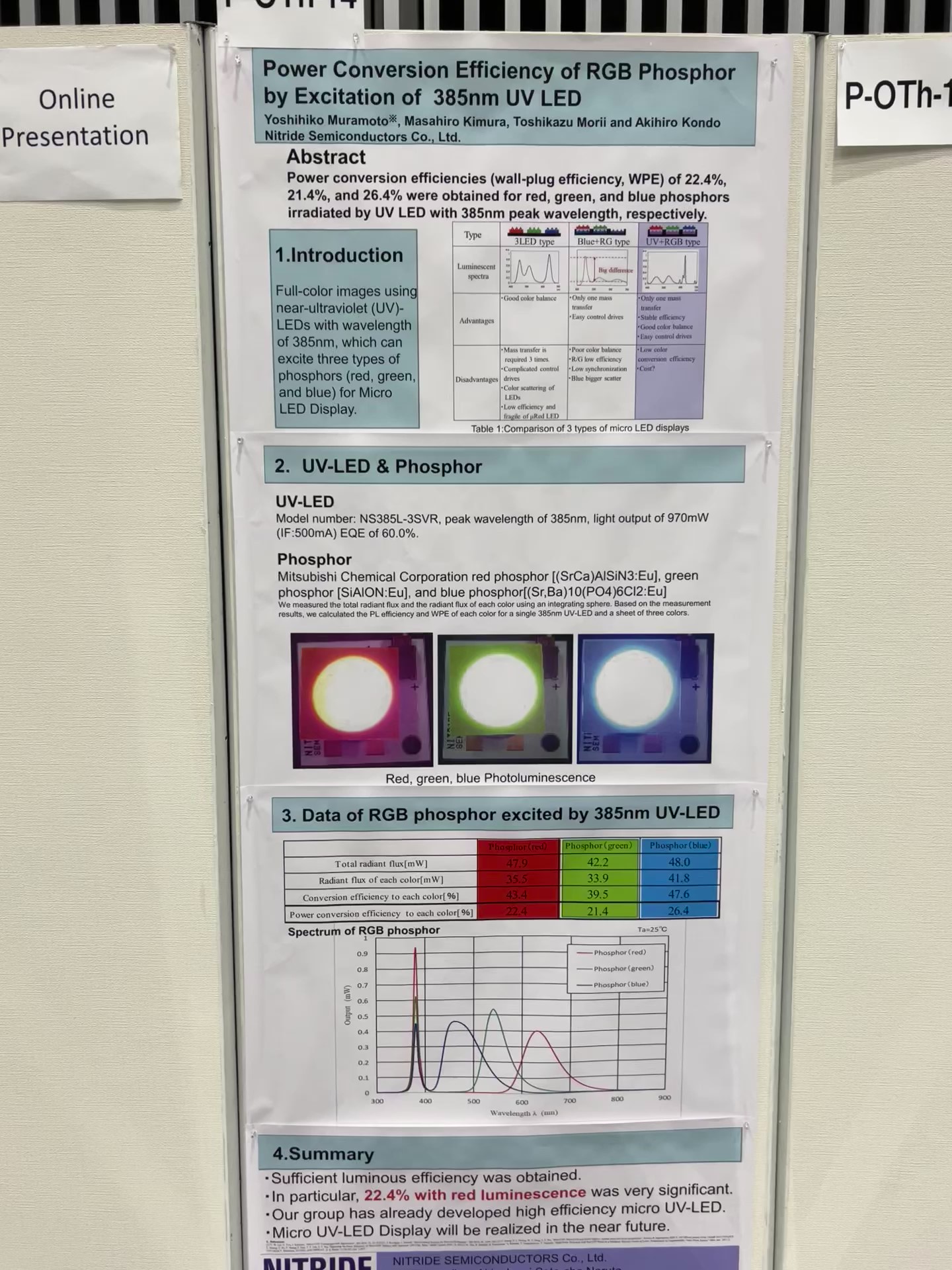
Nitride Semiconductors Successfully Settles UV-LED Patent Litigation and Continues Enforcement against UV LED Suppliers in U.S
Nitride is one of the earliest ground breakers in the field of UV-LEDs. With Professor Emeritus Shiro SAKAI at Tokushima University, Nitride succeeded in developing highly efficient UV-LEDs as early as 2000. This was the first time in the world such a breakthrough in UV LED technology had been achieved. Nitride has continued to manufacture and sell UV-LEDs thereafter, and has invested enormously in R&D to develop and enhance its UV-LED technology.
To protect its UV-LED patented technology, Nitride initiated its patent enforcement campaign starting in 2017. By virtue of such efforts, a judgment was issued out of the U.S. District Court for the Northern District of California in favor of Nitride and against RayVio Corporation (“Rayvio”) in 2020, who infringed Nitride’s UV-LED patent. That judgment was also in Nitride’s favor with respect to the validity of its patent. The U.S. Patent & Trademark Office has also confirmed the validity of the key claims of Nitride’s patent in its final judgment on an Inter Parte Review case filed by RayVio. Further, patent lawsuits against Lite-On Technology Corporation and Crystal IS, Inc. are pending in the U.S. District Court for the Western District of Texas, and the U.S. District Court for the Northern District of New York, respectively, where Nitride tries to enforce Nitride’s UV-LED patent.
Nitride considers its intellectual property rights to be vitally important company assets. Accordingly, Nitride will take any and all action necessary to enforce its patent against infringers in any country and uphold its patents and other intellectual property rights.
An exclusive interview with President Muramoto was posted on LEDinside.
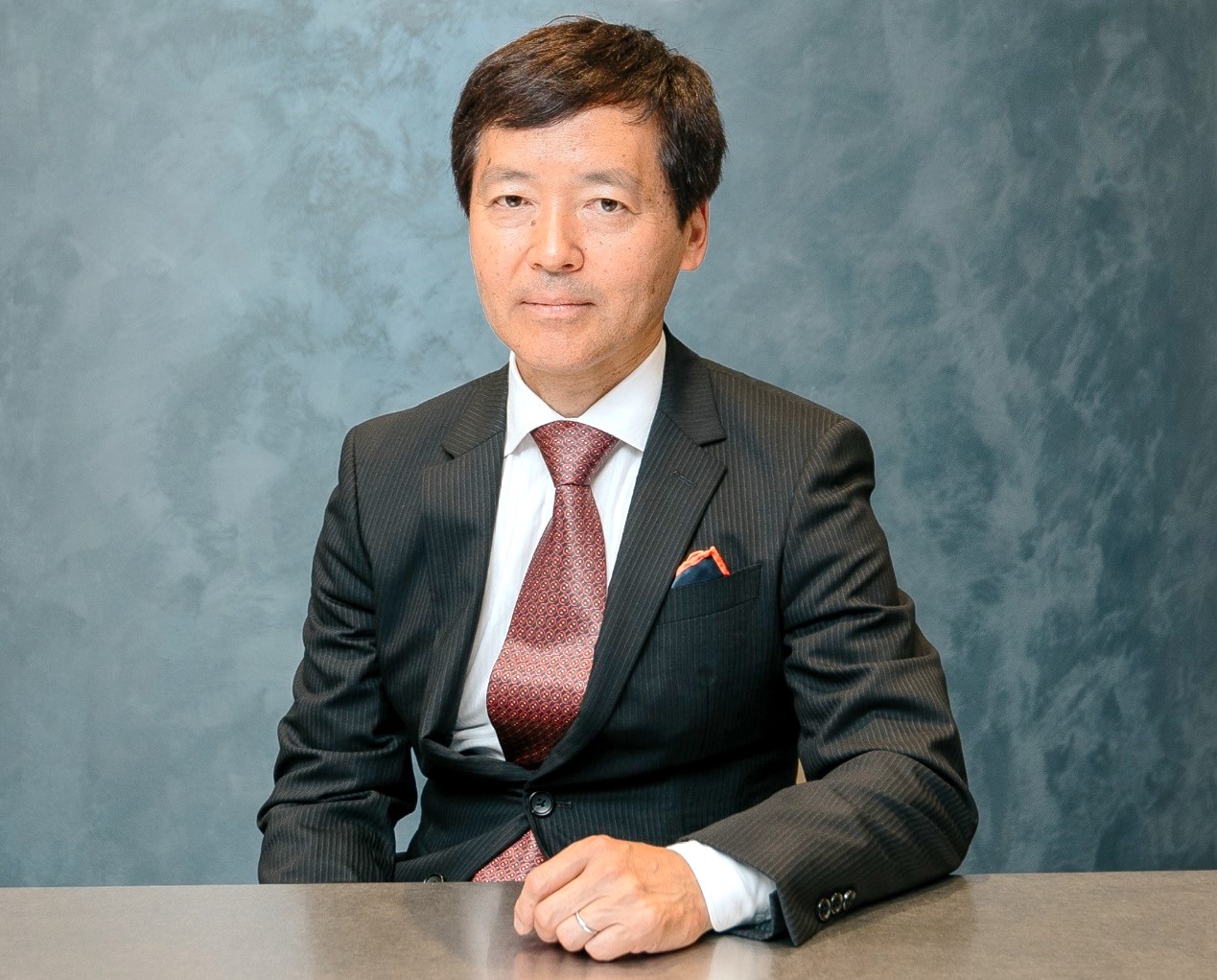
Nitride Semiconductors verified the inactivating effect on OC43 coronavirus (pseudo SARS-CoV-2) using three different wavelengths in the deep ultraviolet region.
◇ Background
The rapid spread of the SARS-CoV-2 Omicron variant in South Africa has revealed that the vaccine's effectiveness is limited. Humans have been using mercury-containing UV lamps as germicidal lamps since 1901 when German physicist Hermann Strebel discovered that UV lamps could inactivate bacteria and viruses. Since inactivation by UV lamp does not use chemicals, it has abundant achievements in the medical field as a safe and reliable inactivation method without residual substances. In recent years, with the development of semiconductor technology, similar effects have been confirmed with deep ultraviolet light emitting diodes (hereinafter UVC-LED) with a wavelength of 300 nm or less. This research was conducted for the purpose of comparing and verifying two types of ultraviolet light with wavelengths of 222 nm and 275 nm, which have newly begun to be applied in the deep ultraviolet region, with the conventional sterilization light source of 254 nm.◇ Experiment contents
As a light source for each emission wavelength, we have prepared an excimer lamp with a wavelength of 222 nm, a UV (low pressure mercury) lamp with a wavelength of 254 nm, and a deep ultraviolet LED with a wavelength of 275 nm.Since the illuminance of each light source is different, in order to make the conditions the same, we adjusted the length of time to irradiate the object according to the illuminance of each light source so that the amount of irradiation light energy (integrated light amount).
◇ Results
values of the test conditions, and are the smear sample immediately after creation and the same sample left for 12 minutes in a safety cabinet at 22 °C 30-35% RH. The orange, yellow, blue, green, and gray bars of each wavelength are used in a bio-clean room maintained at 20 °C at 8-14% RH, after the smear sample has been completely dried according to the protocol. The figure shows the result of irradiating the light amount of orange 0 J / m2. Yellow 7.5 J / m2, blue 15 J / m2, green 30 J / m2, gray 60 J / m2 in order from the left at a distance of 50 cm from the light source. Regarding the change over time in the residual infection rate, the shorter the bar length compared to the 0.0 J / m2 orange bar graph, the higher the inactivating effect. Notably, the 60J / m2 gray bar graph with the largest amount of illuminated light showed the shortest at 275nm, followed by a wavelength of 254nm and finally 222nm.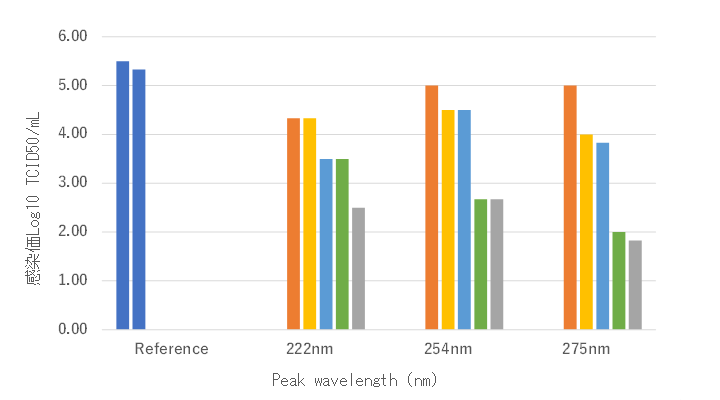
◇ Significance
Compared to the wavelength of 254 nm, which has been conventionally applied as a sterilization line wavelength, the result was that the wavelength of 275 nm has the same or better inactivating effect for 254nm on the pseudo SARS-CoV-2. This is in line with the flow of total abolition of mercury stipulated in the United Nation Environmental Plan (UNEP) "Minamata Convention on Mercury". It shows that UVC-LED can fully fulfill its role of abandon mercury. We hope that UVC-LED light sources will be widely applied in the medical field in the future, and that the health hazards caused by the environmental pollutant mercury will be reduced.Micro UV-LED related patents were granted in Europe and US
We are one of the earliest founders in the UV-LED industry. We succeeded in developing the world's first high-efficiency UV-LED in collaboration with Professor Emeritus Shiro Sakai of the University of Tokushima in 2000, and since then, we are a pioneer company of UV-LED that manufactures and sells UV-LED products. We have invested heavily in the development and improvement of UV-LEDs, which have been extremely difficult.
Regarding the patented technology that was established this time, micro LED displays are being actively developed by various companies, including Apple Inc., as next-generation display technologies, following organic EL displays, which have problems with durability. Conventional red, blue, and green LEDs have different light wavelengths, so the compound differs depending on the color, and not only the electrical characteristics differ, but also the reaction speed and deterioration characteristics make it difficult to control the display. In addition, since the band gap of the red LED is narrow, the electrical characteristics deteriorate due to micronization. Furthermore, since the material is brittle, it is difficult to reduce the size to 50 microns or less, and each company is working on development.
This patented technology improves luminous efficiency in micro LED chips with wavelengths of 385 to 400 nm by reducing the chip size to 50 µ m or less, mainly using a superlattice structure, and using a patterned sapphire substrate (PSS). Unlike LEDs of other colors whose luminous efficiency decreases due to micro-sizing, this patent suppresses the decrease in efficiency.
○ European application (UK, Germany, France)
September 8, 2021 Patent certificate issued (patent date)
Application number: 19185578.2
Patent number: 3644379
○ American application
October 5, 2021 Patent certificate issued (patent date)
Application number: 16 / 509,053
Patent number: 11,139,342
Micro UV-LED can obtain full color by exciting red, blue and green phosphors. It is difficult and time-consuming to mount LED chips as small as wheat flour, which are 20 to 30 microns in size, on a TFT display board. By unifying the LED chips from three types of red, blue, and green to one type of UV-LED, not only mounting is easy, but also current and voltage control is easy. Although it was said that the luminous efficiency of UV-LED was low, this high efficiency technology may greatly improve the feasibility of micro LED display.
We regard intellectual property rights such as our patent rights as extremely important management assets, and we will take decisive measures around the world for acts that infringe or may infringe our intellectual property rights.
Japanese Journal of Applyed Physics (JJAP) invited our papers have been published.
Nitride Semiconductors Has Entered into Settlement and License Agreement Relating to UV-LED Patent Infringement Lawsuit in USA
Further, Nitride has filed a complaint against Lite-On Technology Corporation and its affiliates in the U.S. District Court for the Western District of Texas, asserting infringement of Nitride’s UV-LED patent.
On June 18, 2021, in relation to the above-mentioned lawsuits, Nitride has entered into a settlement and patent license agreement with QT-Brightek Corp. (headquartered in California) which provides that QT-Brightek Corp. does not dispute that its UV-LEDs infringe, and QT-Brightek Corp. has also agreed to respect Nitride’s patent.
As for other UV LED makers’ products, Nitride continues to pursue patent litigations in the Minnesota and Texas court.
Nitride is one of the earliest ground breakers in the field of UV-LEDs. With Professor Emeritus Shiro SAKAI at Tokushima University, Nitride succeeded in developing highly efficient UV-LEDs as early as 2000. This was the first time in the world such a breakthrough in UV LED technology had been achieved. Nitride has continued to manufacture and sell UV-LEDs thereafter, and has invested enormously in R&D to develop and enhance its UV-LED technology.
To protect its UV-LED patented technology, Nitride initiated its patent enforcement campaign starting in 2017. By virtue of such efforts, a judgment was issued out of the U.S. District Court for the Northern District of California in favor of Nitride and against RayVio Corporation (“Rayvio”) in 2020, who infringed Nitride’s UV-LED patent. That judgment was also in Nitride’s favor with respect to the validity of its patent. The U.S. Patent & Trademark Office has also confirmed the validity of the key claims of Nitride’s patent in its final judgment on an Inter Parte Review case filed by RayVio.
Nitride considers its intellectual property rights to be vitally important company assets. Accordingly, Nitride will take any and all action necessary to enforce its patent against infringers in any country and uphold its patents and other intellectual property rights.
New release of the micro UV-LED chip for micro LED displays.
◇ Background
Micro LED displays are the next-generation displays for liquid crystal and organic LED displays, and are being developed by Apple Inc. of the United States and other companies in various countries. The red, blue, and green micro LED chips that these companies are working on are being developed. With the applied method, it is difficult to miniaturize the red LED chip to 50 µm or less, and the development is delayed. Our group is proceeding with the development of displays by using micro-ultraviolet (hereinafter UV) LEDs to excite red, blue, and green phosphors, and in putting them into practical use, the cost of micro UV-LED chips can be reduced. It was an issue.◇ Summary
We have been working on the development of micro UV-LED chips with a wavelength of 385 nm ahead of other companies. The chip size of the conventional micro UV-LED is 16 µm x 48 µm, the chip spacing is as wide as 10 µm in the horizontal direction and 30 µm in the vertical direction, and the quantity that can be obtained from the wafer is about 3.4 million chips from the 4-inch wafer. The newly developed micro UV-LED chip has a chip size of 12 µm x 24 µm, the chip spacing is 5 µm in both the vertical and horizontal directions, and the number of chips that can be obtained from a 4-inch wafer is about 14 million chips, which is about four times as many. The cost per chip is one-fourth that of the conventional chip. In terms of electrical characteristics, we have confirmed good electrical characteristics and have made great strides toward practical application in the near future.When making a 25 mm square size display, 300,000 micro LED chips are required, but 11 micro LED displays can be made from one wafer. (All chips are controlled by an IC driver to display a full-color screen)
Supplement: Since the particle size of edible wheat flour is 10 µm to 100 µm, it is close to the size of fine flour.
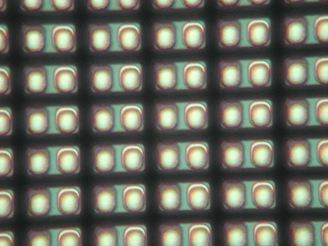
Chip size:12 µm x 24 µm, chip spacing 5 µm
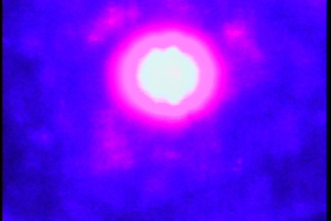
Light emission of micro UV-LED chip (IF:100µA, VF:3.58V)
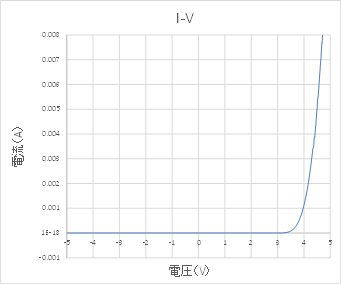
I-V characteristics
Nitride Semiconductors Has Filed Complaint against Lite-On, Continuing Enforcement against Infringement of its UV LED Patent
Nitride is one of the earliest ground breakers in the field of UV-LEDs. With Professor Emeritus Shiro SAKAI at Tokushima University, Nitride succeeded in developing highly efficient UV-LEDs as early as 2000. This was the first time in the world such a breakthrough in UV LED technology had been achieved. Nitride has continued to manufacture and sell UV-LEDs thereafter, and has invested enormously in R&D to develop and enhance its UV-LED technology.
To protect its UV LED patented technology, Nitride initiated its patent enforcement campaign starting in 2017.
By virtue of such efforts, a judgment was issued out of the U.S. District Court for the Northern District of California in favor of Nitride and against RayVio Corporation ("Rayvio") in 2020, who infringed Nitride's UV LED patent. That judgment was also in Nitride's favor with respect to the validity of its patent. The U.S. Patent & Trademark Office has also confirmed the validity of the key claims of Nitride's patent in its final judgment on an Inter Parte Review case filed by RayVio.
Further, the lawsuit which Nitride has filed against Digi-Key Corporation ("Digikey"), a global electrical components distributor, is pending before the U.S. District Court for the District of Minnesota. Nitride is asserting that UV LED products being supplied by various LED companies - such as American Opto Plus LED Corp., Crystal IS Inc., Lite-On Semiconductor Corp, Luminus Devices Inc., Kingbright Electronic Co., Ltd., QT-Brightek Corp. and Vishay Intertechnology Inc. - have been infringing Nitride's UV LED patent.
Nitride considers its intellectual property rights to be vitally important company assets. Accordingly, Nitride will take any and all action necessary to enforce its patent against infringers in any country and uphold its patents and other intellectual property rights.
<Related Articles>
Nitride Semiconductors Continues Enforcement against Infringement of its UV LED Patent
In the complaint, Nitride is asserting that UV LED products being supplied by various LED companies - such as American Opto Plus LED Corp., Crystal IS Inc., Kingbright Electronic Co., Ltd., and QT-Brightek Corp. - have been infringing Nitride's UV LED patent. In an earlier-filed patent litigation against Digikey, Nitride has already accused patent infringement against UV LED products of Luminus Device Inc. and Lite-On Semiconductor Corp.
Nitride is one of the earliest ground breakers in the field of UV-LEDs. With Professor Emeritus Shiro SAKAI at Tokushima University, Nitride succeeded in developing highly efficient UV-LEDs as early as 2000. This was the first time in the world such a breakthrough in UV LED technology had been achieved. Nitride has continued to manufacture and sell UV-LEDs thereafter, and has invested enormously in R&D to develop and enhance its UV-LED technology.
To protect its UV LED patented technology, Nitride initiated its patent enforcement campaign starting in 2017. By virtue of such efforts, a judgment was issued out of the U.S. District Court for the Northern District of California in favor of Nitride and against RayVio Corporation ("Rayvio") in 2020, who infringed Nitride's UV LED patent. That judgment was also in Nitride's favor with respect to the validity of its patent. The U.S. Patent & Trademark Office has also confirmed the validity of the key claims of Nitride's patent in its final judgment on an Inter Parte Review case filed by RayVio.
Nitride considers its intellectual property rights to be vitally important company assets. Accordingly, Nitride will take any and all action necessary to enforce its patent against infringers in any country and uphold its patents and other intellectual property rights.
<Related Articles>
UV Seminar, Science Photonics Fair 2020
CEO Muramoto made an invited speech.
- Date:
- 13th November, 2020 15:40窶骭16:35
- Venue:
- Tokyo Metropolitan Industrial Trade Center, Hamamatsucho kan
- Speaker:
- CEO Yoshihiko Muramoto
- Title:
- Technology of UVC-LED and Development of Anti-virus Applications
Nitride Semiconductors Continues Enforcement against Infringement of its UV LED Patent
On Aug.20th, Nitride Semiconductors Co., Ltd. ("Nitride"), a pioneer of ultraviolet light emitting diode (UV LED) technology, hereby announces that, it has successfully filed an amended complaint against Digi-key Corp, a global electrical components distributor, in the U.S. District Court for the District of Minnesota, asserting infringement of Nitride's UV LED patent.
According to the amended complaint, UV LED products being supplied by various LED companies - such as Lite-On Semiconductor, Luminus Devices, and Vishay Intertechnology - are infringing Nitride's UV LED patent.
Nitride is one of the earliest ground breakers in the field of UV-LEDs. With Professor Shiro Sakai at Tokushima University, Nitride succeeded in developing highly efficient UV-LEDs as early as 2000. This was the first time in the world such a breakthrough in UV LED technology had been achieved. Nitride has continued to manufacture and sell UV-LEDs thereafter, and has invested enormously in R&D to develop and enhance its UV-LED technology.
To protect its UV LED patented technology, Nitride initiated its patent enforcement campaign starting in 2017. By virtue of such efforts, a judgment was issued out of the U.S. District Court for the Northern District of California in favor of Nitride and against RayVio Corporation ("Rayvio") in 2020, who infringed Nitride's UV LED patent. That judgment was also in Nitride's favor with respect to the validity of its patent. The U.S. Patent & Trademark Office has also confirmed the validity of the key claims of Nitride's patent in its final judgment on an Inter Parte Review case filed by RayVio.
Nitride considers its intellectual property rights to be vitally important company assets. Accordingly, Nitride will take any and all action necessary to enforce its patent against infringers in any country and uphold its patents and other intellectual property rights.
New Product Announcement Press Release
Summary
We are pleased to announce that we have developed the world's first UV-LED for exposure machines applied to manufacturing semiconductors and PCBs.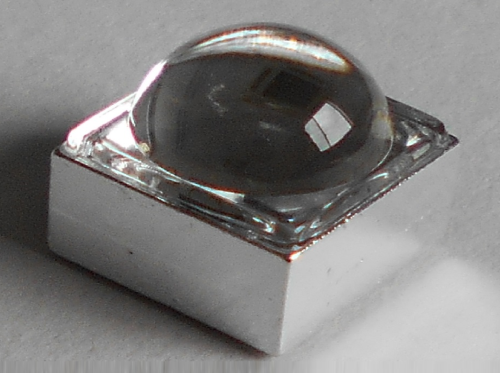
New product name: UV-LED; NS365L-9RXT
Background
UV lamps containing mercury are still used in semiconductor exposure machines, but in addition to functional restrictions such as long standby time, short lifetime, low UV illuminance stability, and inconvenient on / off control. Therefore, it is expected that the United Nations Environment Program Minamata Convention will promote switching to semiconductor (LED) light sources due to environmental issues.Features
- Energy saving, long life
High efficiency, energy saving and long-life wavelength 365nm UV-LED chip is adopted, so UV output 3.2W (If: 3A, Vf: 4.6V) is demonstrated. - Narrow directional angle suitable for semiconductor exposure
Parallel light is required for accurate exposure, but UV-LED light sources generally have a wide directional angle (about 120°), and the amount of light captured for exposure tends to be insufficient. Therefore, by combining a deep reflector with a lens of high UV transmittance, we have achieved a directional angle of 15° or less. This makes it possible to exchange the UV ramp light source of the conventional exposure machine with UV-LEDs instead of purchasing new UV-LED exposure machines. - Compact
Size is very compact with a length of 9 mm x width of 9 mm x height of 8.5 mm, so mounting density can be increased. - Inexpensive
The unit price per 10,000 mass production is around USD50.
Applications
light sources for exposure machines such as semiconductors and PCBs.LED NEXT STAGE 2020
We will set up booth at LED NEXT STAGE 2020.
LED NEXT STAGE 2020 was canceled due to the spread of the Novel Coronavirus.
- Date:
- 3-6 March, 2020 10:00窶骭17:00
(10:00-16:30 on the last day) - Venue:
- Tokyo Big Sight, Japan
- Booth Number:
- LD1005
- Organized by:
- Japan LED Association, Nikkei Inc.
CEO Muramoto will make a speech at Seminar Stage.
LED NEXT STAGE 2020 was canceled due to the spread of the Novel Coronavirus.
- Date:
- 4 March, 2020 13:00窶骭13:45
- Venue
- West Hall 3, Tokyo Big Sight
- Speaker:
- CEO Yoshihiko Muramoto
Nitride Semiconductor Wins UV LED Patent Lawsuits against RayVio
On Jan.27th, Nitride Semiconductor Co., Ltd. ("Nitride") announced that it won a patent infringement lawsuit against RayVio Corporation ("Rayvio"), a California UV-LED company.
On January 13, The California Northern District federal court issued a judgment in favor of Nitride, declaring that RayVio has infringed Nitride's patent and that the asserted claims of Nitride's patent are not invalid.
A one month ago, U.S. Patent Office has also confirmed the validity on the key claims of Nitride's patent in its final judgments of the Inter Parte Review case filed by RayVio.
Nitride is a pioneer in the field of UV-LED. With Professor Shiro Sakai at Tokushima University, Nitride succeeded in development of highly efficient UV-LED in 2000 for the first time in the world, and has continued to manufacture and sell UV-LED thereafter. Nitride has made a huge investment in R&D to develop and modify UV-LED, which has been quite challenging.
Nitride places its intellectual property rights as its vitally important management assets. Accordingly, Nitride will take resolute actions to against infringers in any country where appropriate and necessary to protect its patents and other intellectual property rights.
IR + UV EXPO 2019
We set up booth at IR + UV EXPO 2019.
- Date:
- 24-26 April, 2019 10:00窶骭17:00
- Venue:
- Pacifico Yokohama, Japan
- Booth Number:
- F-25
- Organized by:
- Japan Photonics Council
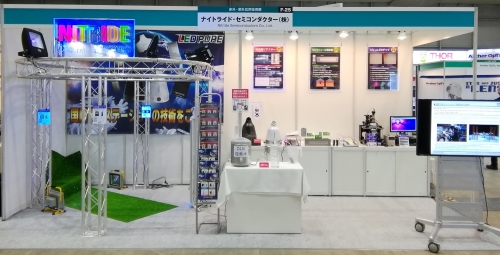
LIGHTING FAIR 2019
We set up booth at LIGHTING FAIR 2019.
- Date:
- March 5 (Tue.) to 8 (Fri.), 2019
10:00 a.m. to 5:00 p.m. (4:30 p.m. on last day only) - Venue:
- Tokyo Big Sight West 1.2 Halls
- Booth Number:
- LF2016
- Organized by:
- UBM Japan Co., Ltd.
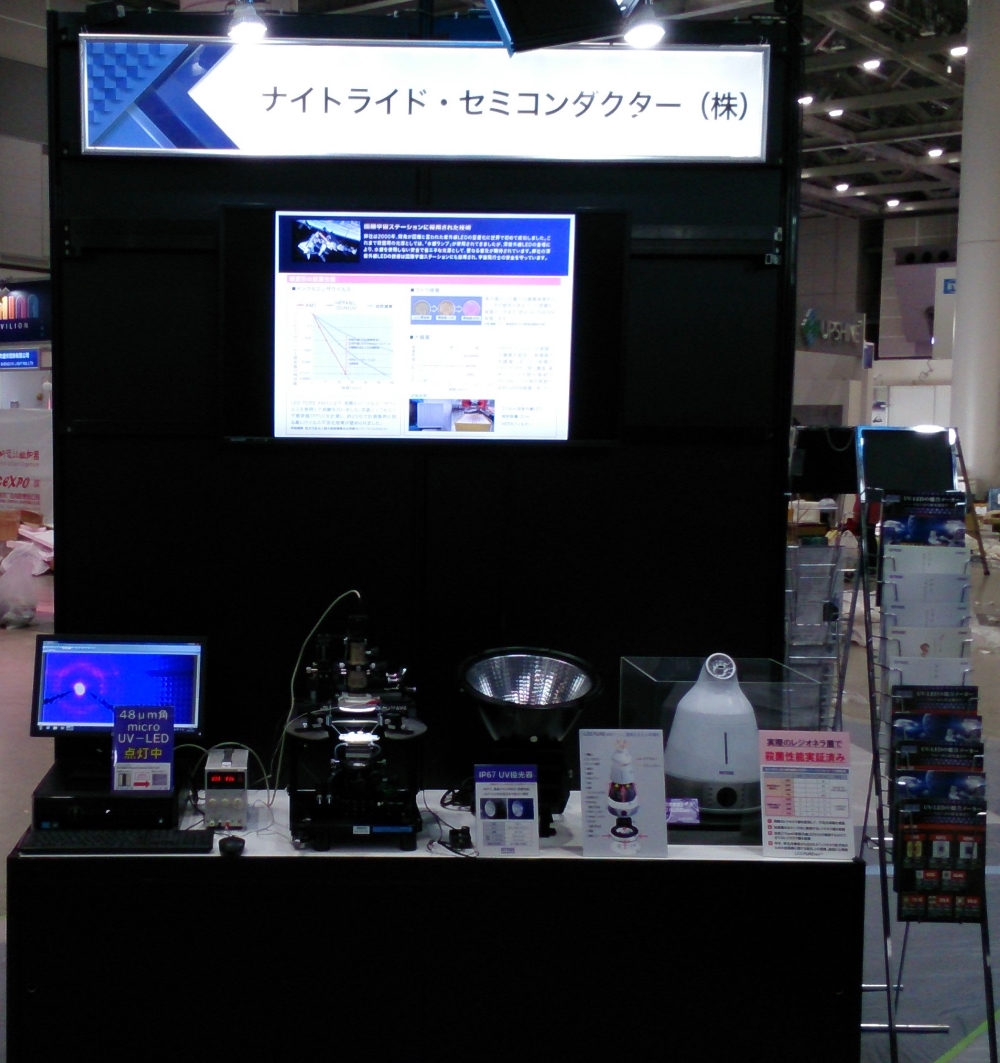
Care Show Japan 2019
We set up booth at Care Show Japan 2019.
- Date:
- 23-24 January, 2019
10:00-17:00 - Venue:
- Tokyo Big Sight Exhibition Center, Japan
- Booth Number:
- D-42 (West Hall 3, 4)
- Organized by:
- UBM Japan Co., Ltd.
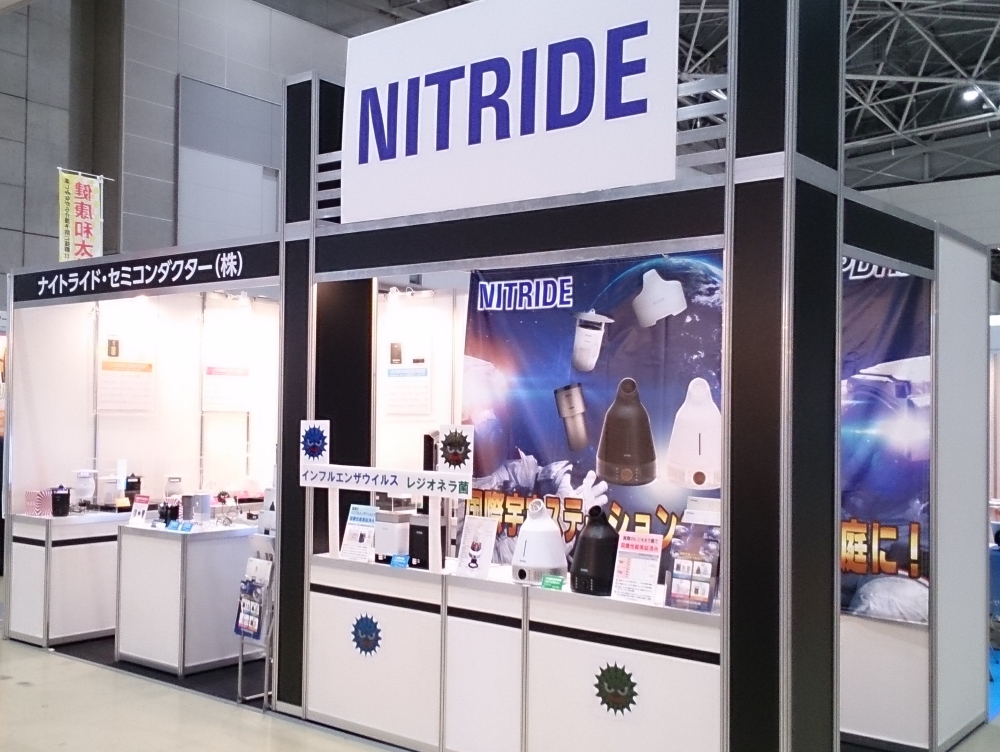
IWN2018
CEO Mr. Muramoto joined as a panelist in the ramp session.
- Date:
- November 11th to 16th, 2018
- Venue:
- Ishikawa Ongakudo, ANA Crowne Plaza Hotel Kanazawa, Motenashi-Dome, Kanazawa, Japan
- Ramp session
title:
Nitride-based Optoelectronic Devices for Automobile Industry- Ramp session
date:
November 13th, 2018 (19:10 - 20:40)- Ramp session
venue:
ANA Crowne Plaza Hotel Kanazawa
The establishment of micro UV-LED chip company for micro LED display
The 79th JSAP Autumn Meeting 2018
CEO Muramoto made an invited speech.
- Presentation date:
- Sep. 18th, 2018 (13:30-14:00)
- Venue:
- Nagoya Congress Center Place 146
- Speaker:
- Nitride Semiconductors Co., Ltd. CEO Yoshihiko Muramoto
- Title:
- UV-LED will replace not only UV ramp but also visible LEDs (15.Crystal engineering)
- Number:
- 18p-146-1
Nitride Filed Patent Infringement Lawsuit against Digi-Key (U.S. Electronic Component Seller) and RayVio (U.S. UV LED Manufacturer) in Tokyo
On July 12, 2018 (Japan time), Nitride Semiconductor Co., Ltd. ("Nitride") filed a patent infringement lawsuit with the Tokyo District Court against Digi-Key Corporation d/b/a Digi-Key Electronics ("Digi-Key"), which sells UV-LED products on the internet that are manufactured by RayVio Corporation ("RayVio"), a CA-based UV-LED manufacturer, and RayVio. In the complaint, Nitride is seeking injunction(including destruction of infringing products) and damages, asserting that Digi-Key and RayVio infringe Nitride's patent (JP 3,285,341, "Method for Manufacturing Gallium Nitride Compound Semiconductor") by manufacturing and selling the UV-LED products.
Based on the U.S. patent corresponding to the Japanese patent described above, on May 23, 2017 (PDT), Nitride has already filed a patent infringement lawsuit with the U.S. District Court, Northern District of California against RayVio, and on September 22, 2017 (CDT), Nitride has already filed a patent infringement lawsuit with the U.S. District Court for the District of Minnesota against Digi-Key.
Nitride is a pioneer in the field of UV-LED. With Professor Shiro Sakai at Tokushima University (Japan), Nitride succeeded in development of highly efficient UV-LED in 2000 for the first time in the world and has continued to manufacture and sell UV-LED thereafter. Nitride has made a huge investment in R&D to develop and modify UV-LED, which has been quite challenging.
Nitride places its intellectual property rights as its vitally important management assets. Accordingly, Nitride will take resolute actions to against infringers whom Nitride found so in any country where appropriate and necessary to protect its patents and other intellectual property rights.
Micro LED Forum 2018
CEO Muramoto made an invited speech.
- Presentation date:
- July 12th, 2018 (10:30-11:00)
- Venue:
- NTUH International Convention Center
No. 2 Xuzho Road, Zhongzheng District (100), Taipei, Taiwan - Speaker:
- Nitride Semiconductors Co., Ltd. CEO Yoshihiko Muramoto
- Title:
- Full Color Fluorescence Patterns Excited by UV-LED Micro Chip
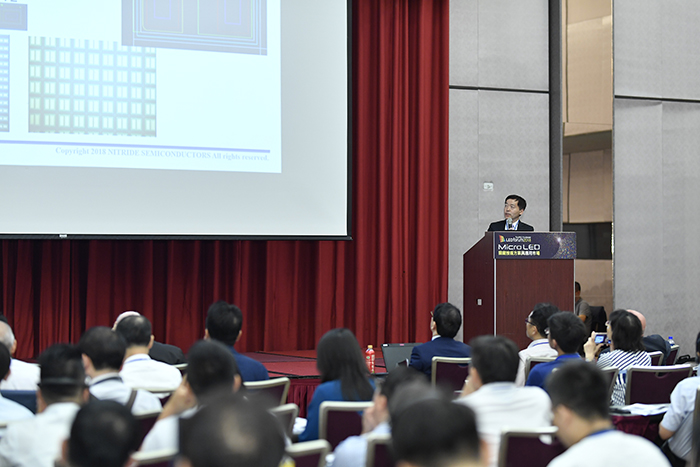
guangzhou international lighting exhibition
CEO Muramoto made an invited speech.
- Date:
- June 9th to 12th, 2018
- Presentation date:
- June 11th, 2018 (15:00)
- Venue:
- China Import and Export Fair Complex
No. 380 Yuejiang Zhong Road, Haizhu District, Guangzhou, China - Speaker:
- Nitride Semiconductors Co., Ltd. CEO Yoshihiko Muramoto
- Title:
- UV-LED is changing its stage from industry to home appliances
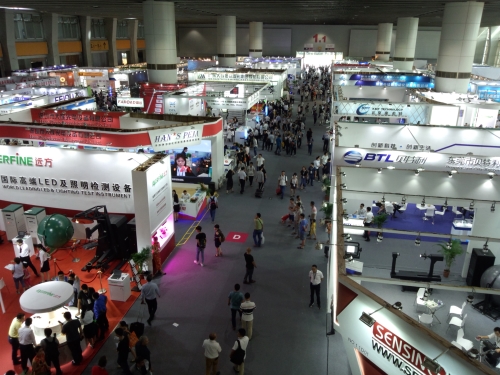
IR + UV EXPO 2018
We set up booth at IR + UV EXPO 2018.
- Date:
- 25-27 April, 2018 10:00窶骭17:00
- Venue:
- Pacifico Yokohama, Japan
- Booth Number:
- F-25
- Organized by:
- Japan Photonics Council
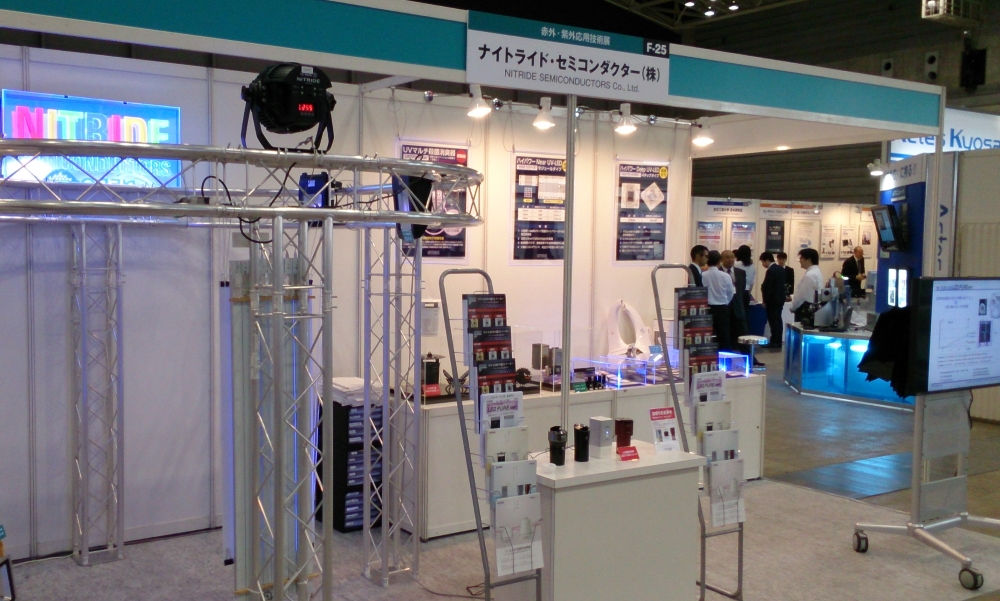
LED PURE by NITRIDE
Our showroom “LED PURE by NITRIDE” was opened in Shinjuku Park Tower on 20 April, 2018.
- Location:
- Shinjuku Park Tower 6F, 3-7-1 Nishi Shinjuku, Shinjuku-ku, Tokyo
- Open hours:
- 10:30 窶骭 19:00
- Closed:
- Wednesday, mid-summer and New Year's holidays
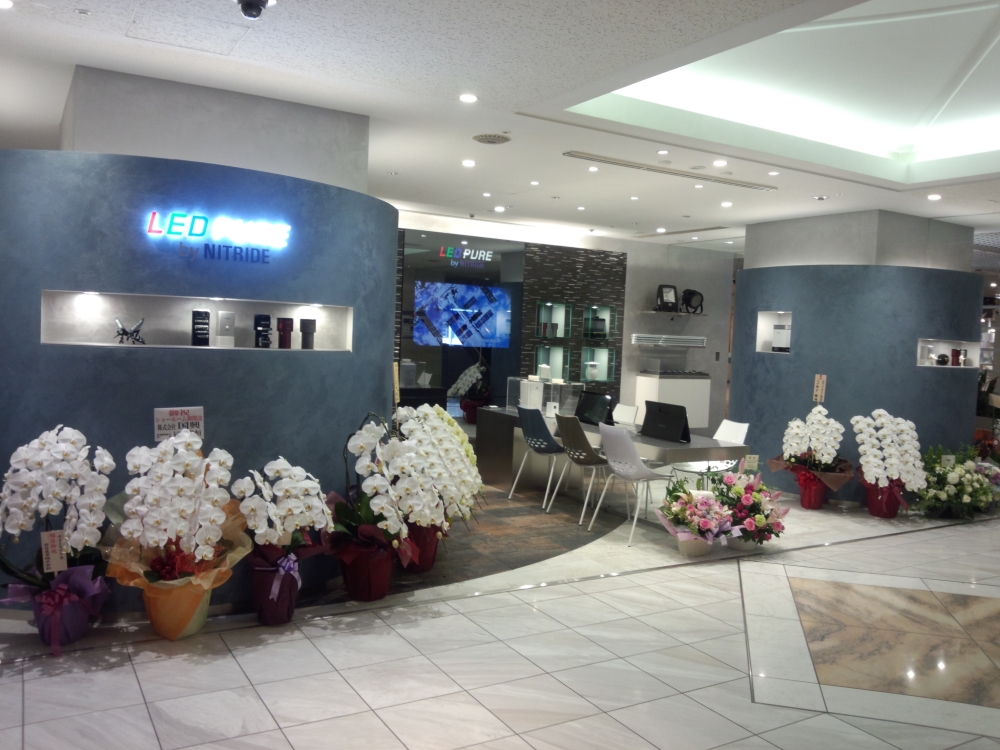
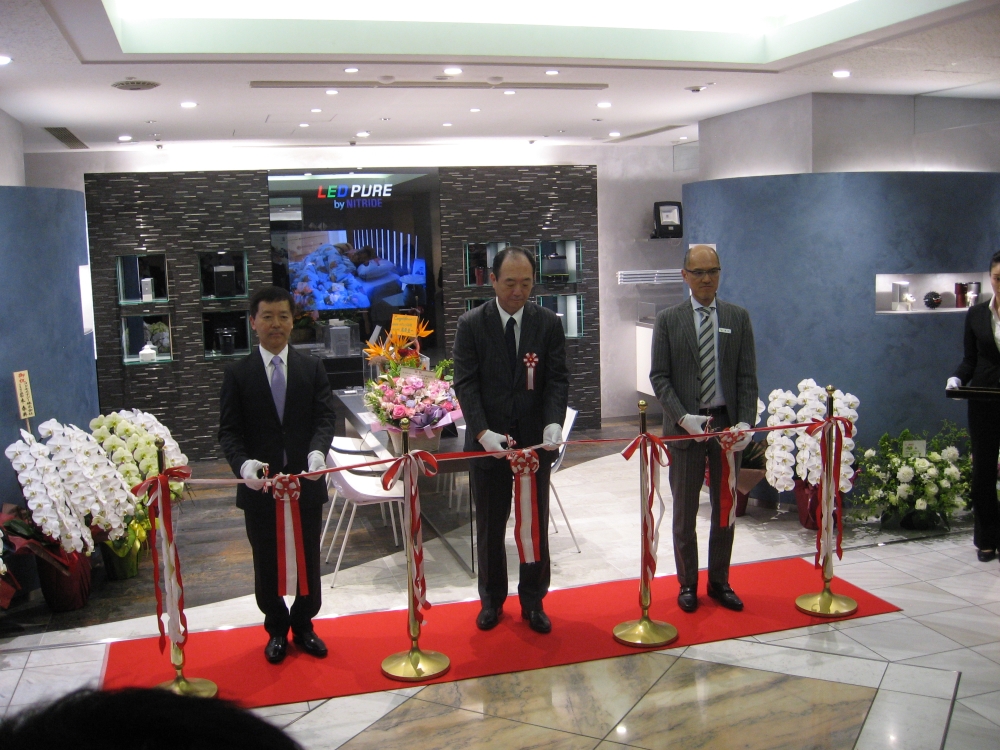
LED NEXT STAGE 2018
We set up booth at LED NEXT STAGE 2018.
- Date:
- 6-9 March, 2018 10:00窶骭17:00
(10:00-16:30 on the last day) - Venue:
- Tokyo Big Sight, Tokyo
- Booth Number:
- LD1001 (West Hall 3/4)
- Organized by:
- Japan LED Association, Nikkei Inc.
